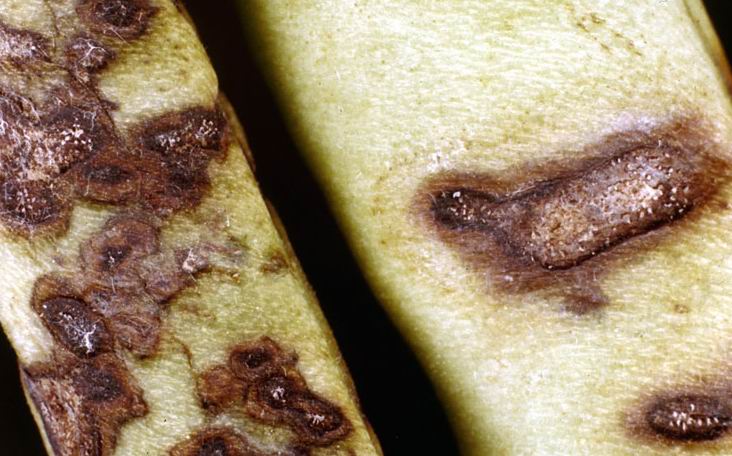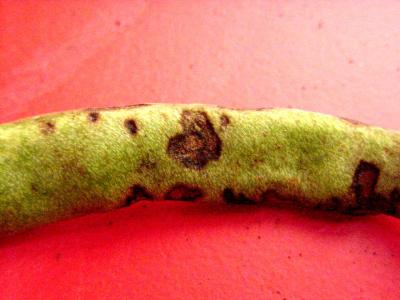(Colletotrichum lindemuthianum)
Credits:Biovision-Infonet

(c) Clemson university

(c) A. M. Varela, icipe
Symptoms of anthracnose can appear on any plant part. Pale brown sunken spots may appear on the cotyledons of infected seedlings. Water may spread the disease to the hypocotyl, which if girdled, kills the seedling. Lesions on leaves are dark brown. They are restricted to the veins on lower leaf surface. On stems, lesions are elongated and sunken. On the pods, the fungus produces black, sunken lesions. These lesions penetrate deep into the pods and may cause shrivelling of the young pods. Infected seed become discoloured changing to yellow through brown to black.
In damp weather, the centres of anthracnose lesions become covered with a pink spore mass. The disease is seed-borne.
What to do:
- Use certified disease-free seeds. Plant resistant varieties (e.g. French variety ‘Paulista’).
- Remove from the field and destroy crop debris after harvest.
- Practise a 2 to 3 year rotation.
- Avoid overhead irrigation.
- Avoid movement of workers in the field when wet.